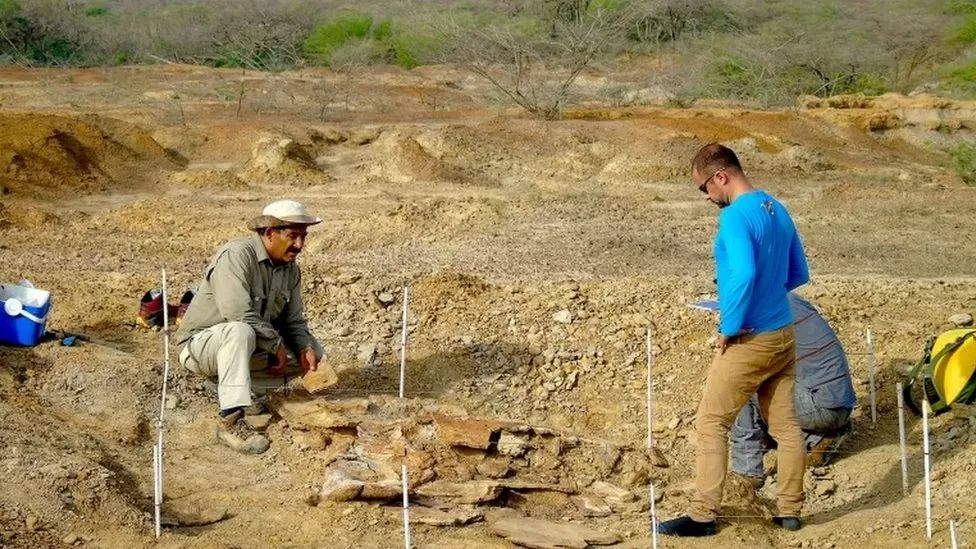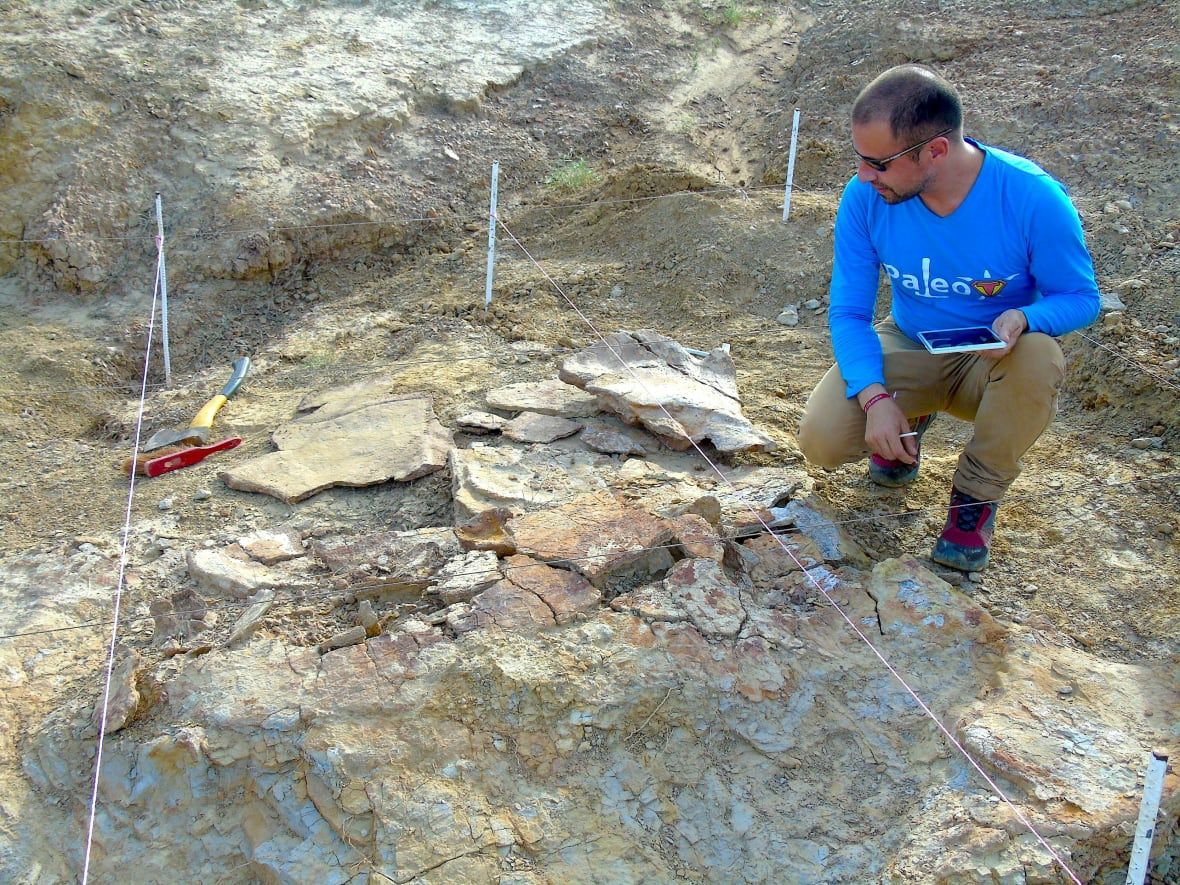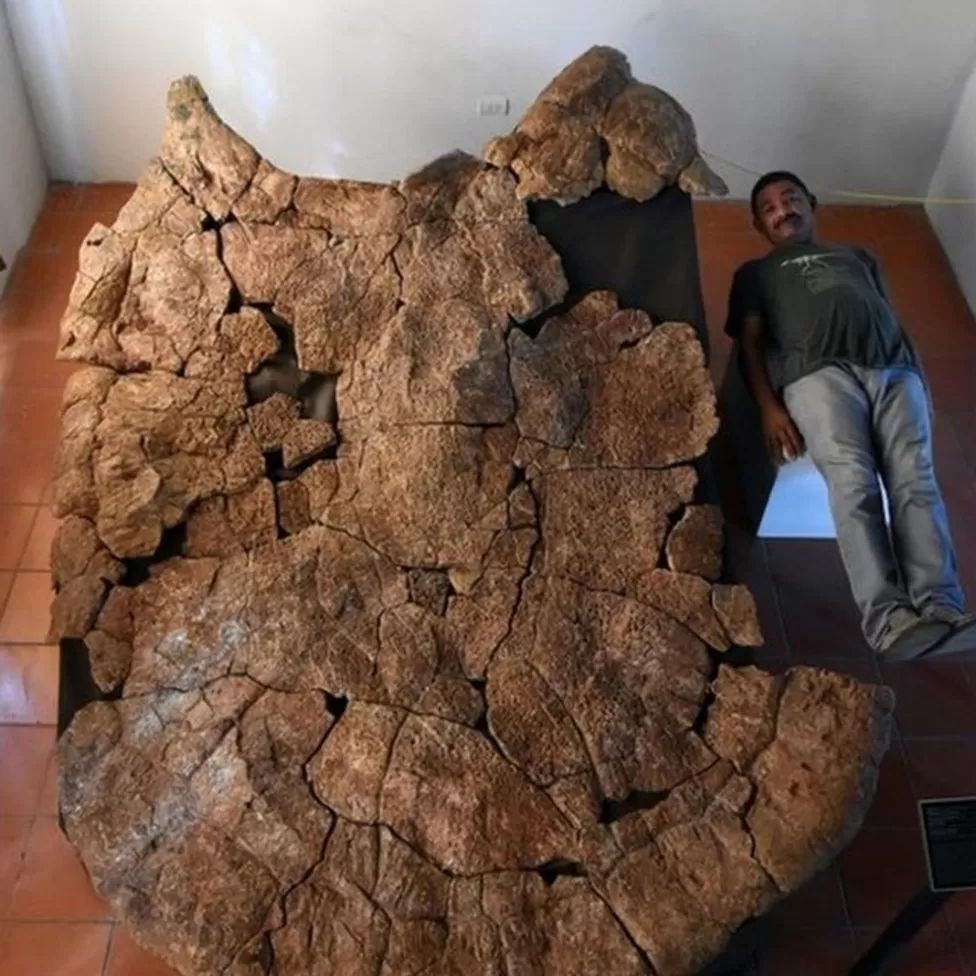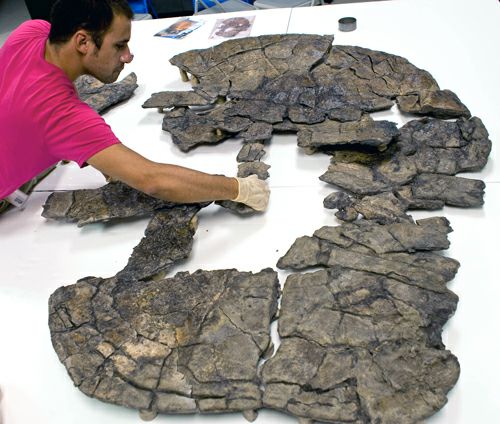“Fossil Unearthed in South America: Giant Turtle the Size of a Car.”
Fossils of a turtle the size of a car have been discovered in what is now northern South America. The turtle, known as Stupendemys geographicus, is believed to have inhabited the region approximately 13 to 7 million years ago.
The fossils were found in the Tatacoa Desert in Colombia and the Urumaco region in Venezuela. Although the first Stupendemys fossils were unearthed in the 1970s, many aspects of this 4-meter-long creature have remained shrouded in mystery.
This enormous turtle, weighing as much as a sedan, inhabited a vast wetland that spanned across northern South America before the formation of the Amazon and Orinoco rivers. It surpassed humans in size.
Male Stupendemys turtles possessed horn-like structures pointing forward on either side of their shells. Deep scars found in the fossils indicate that these horns were likely used as weapons in battles with rival turtles.
Researchers have recently discovered a 3-meter-long shell and a lower jawbone, providing further insights into the turtle’s diet. It is believed that Stupendemys lived in lakes and rivers, alongside giant crocodiles, and had a diverse diet consisting of small animals, vegetation, fruit, and seeds.
The large size of Stupendemys played a crucial role in its defense against other formidable predators. One of the Stupendemys fossils was found with a massive crocodile tooth embedded in it.
Paleontologists are actively studying these fossils in the Urumaco region of Venezuela.
Hits: 0







